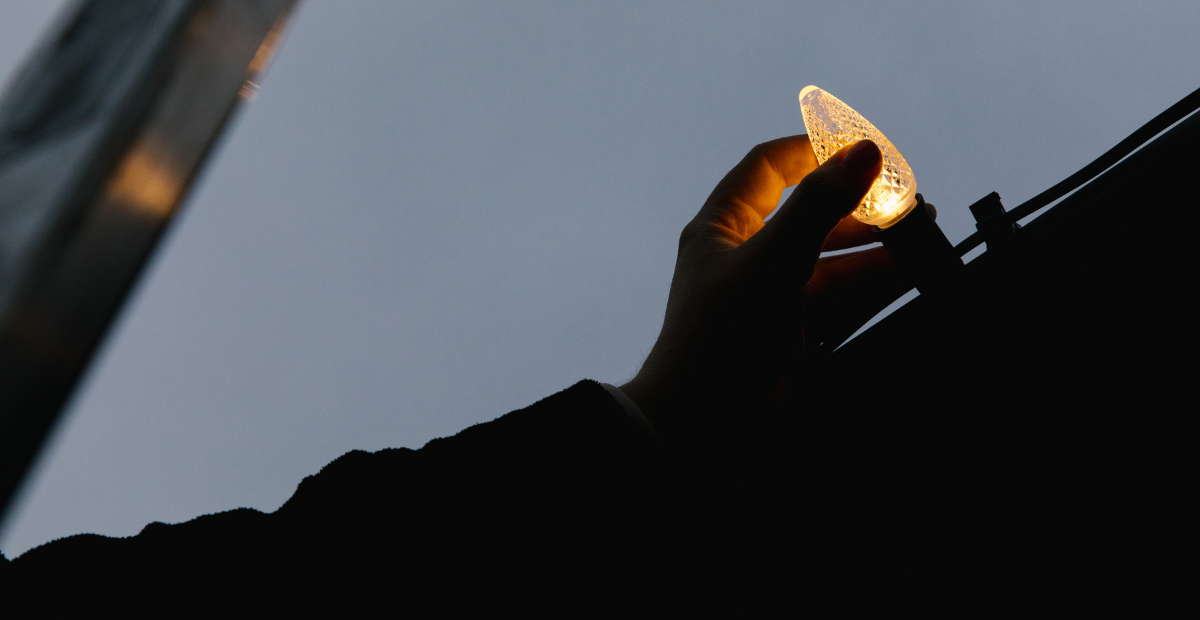The warm glow of an incandescent can feel unbeatable, especially to those of us who grew up with them. However, LED technology has advanced rapidly and there are many reasons to make the switch! Below are some of the key benefits of switching from incandescent to LED:
Brightness & Coolness

LED bulbs typically have a higher brightness (measured in lumens) than incandescent bulbs, while also using less energy to produce the same amount of light. A 60-watt incandescent bulb produces around 800 lumens of light, while an equivalent LED bulb only uses around 9 watts and produces the same amount of light.
The filament in an incandescent bulb can reach temperatures of up to 2,700 degrees Celsius (4,900 degrees Fahrenheit) when in operation, which is why they can become very hot to the touch. LED bulbs typically operate at much lower temperatures, ranging from around 25-50 degrees Celsius (77-122 degrees Fahrenheit).
Design Capabilities

Incandescent bulbs have a very simple design, consisting of a thin filament wire made of tungsten that is enclosed in a glass bulb filled with inert gas, typically nitrogen or argon. When electricity flows through the filament, it heats up and becomes white-hot, producing light as a result of the thermal radiation.
The compact size of LEDs (an acronym for “light emitting diodes”) makes them an ultra-flexible design element, which has allowed designers and manufacturers to create shapes, silhouettes and technologies that simply weren’t possible before. They can also be designed to emit light in different colours, and can be made to be dimmable or non-dimmable. Think of all the cool rope lighting, RGB lighting, and microlights that are now available on the market. None of this would be possible without LED technology!
Durability

LED bulbs do not contain a fragile filament, which is the part of an incandescent bulb that produces light and can easily break. Instead, LED bulbs are made of solid-state components, including semiconductor chips, which are designed to last for tens of thousands of hours. LED bulbs can last for many years, even with regular use, and are less likely to be replaced frequently.
In addition to their longevity, LED bulbs are also highly resistant to damage from vibration, shock, and extreme temperatures. They are often used in harsh environments such as outdoor lighting (did someone say Christmas lights?), automotive lighting, and industrial settings, where they can withstand the rigors of daily use. For example, our G30s and C9s are made of polystyrene that is safe to drop from the height of your roof as it’s shatter proof. We even once tested a G30 by driving over one in an F150! The lens cracked, but the LED still functioned when placed in a socket.
Energy Efficiency

Compared to traditional incandescent light bulbs, which convert only 10-15% of their energy input into light and the rest is wasted as heat, LEDs are much more efficient. Depending on the technology used, they can convert up to 90% of their energy input into light. LED technology has advanced rapidly in recent years, allowing for even greater energy efficiency. Talk about cutting your electricity bill!
Environmental Benefits

LED bulbs are much more environmentally friendly than incandescent bulbs. They use less energy, which - depending on your municipality’s main energy source - means they burn fewer greenhouse gases. They also have a much longer lifespan averaging at about 50,000 hours and therefore produce less waste. LED bulbs don’t contain any toxic materials such as mercury, which can be found other types of lighting such as fluorescent.
Disposing of LED bulbs is much easier and safer, as they do not require special handling. We encourage you to check with your municipalities’ waste bylaws to see where they might be accepted for recycling. Often, your local hardware store will accept them.

